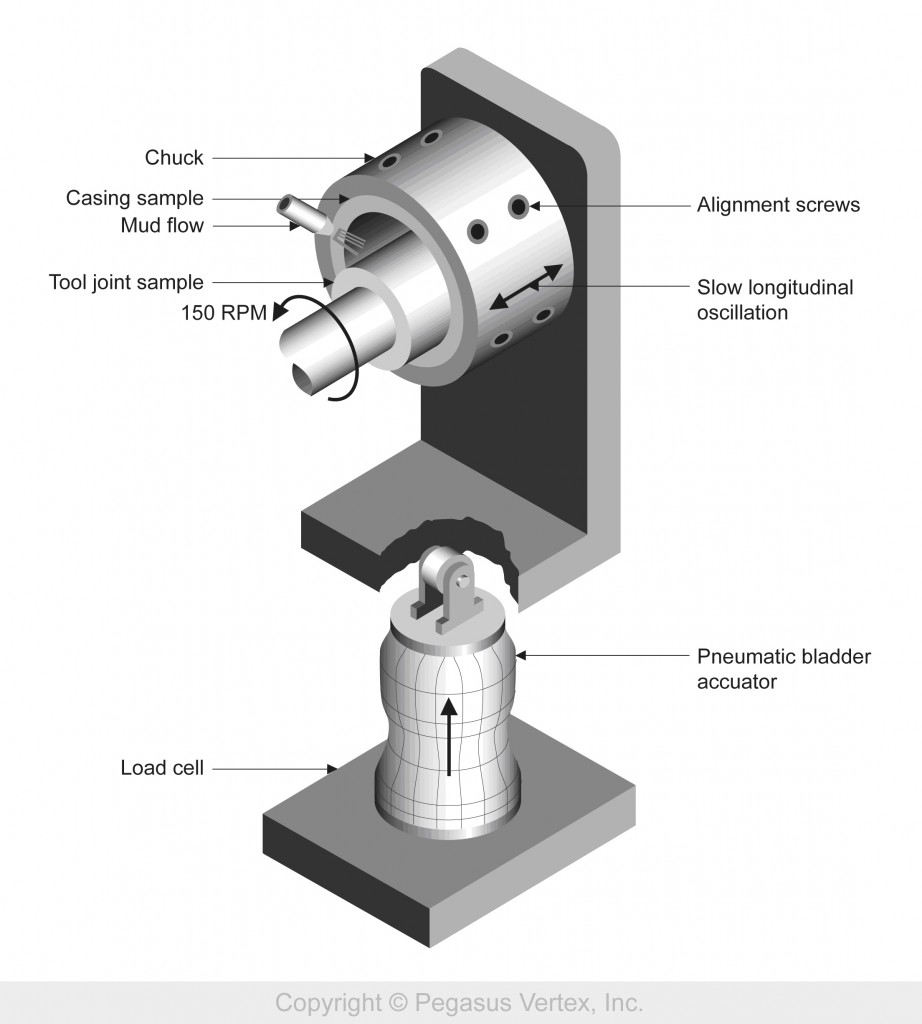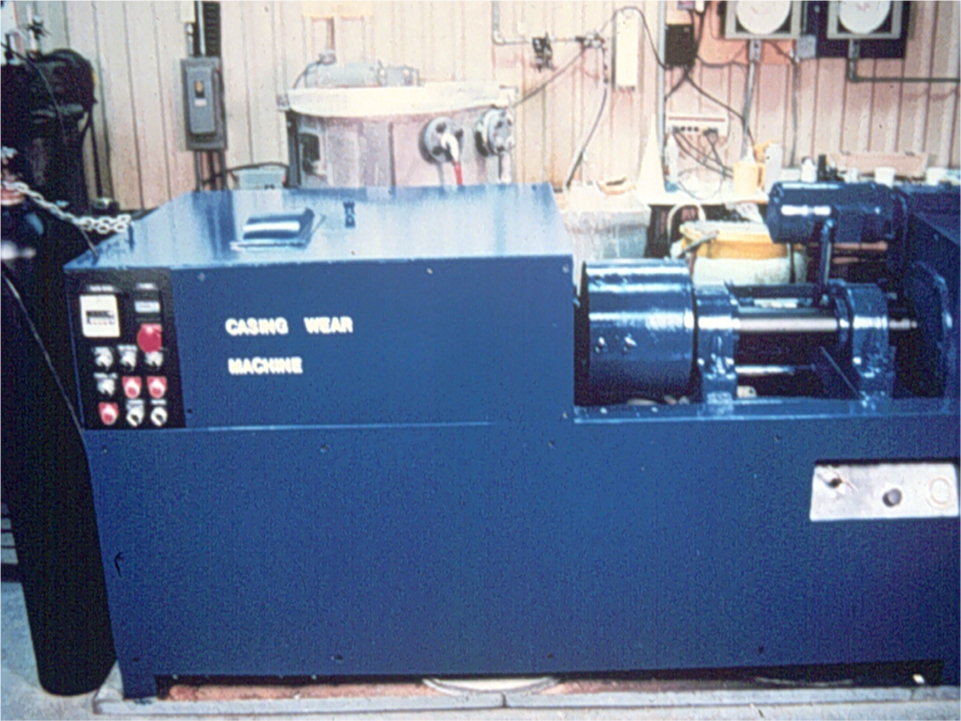When it became apparent that casing wear was going to be a matter to be reckoned with, several organizations initiated experimental studies of this phenomenon. Among these were (1) Shell Oil Company, (2) Exxon, (3) Texas A & M, and (4) Drilco. All these operators discovered that experimental casing wear studies were both time consuming and expensive.
All of the casings wear studies involved building a machine that would simulate field conditions as closely as possible in the laboratory. Figure 1 is a symbolic presentation of a casing wear test machine that incorporates all of the parameters needed to simulate casing wear as it would occur under field conditions.
As shown in the Figure 1, the rotating tool joint sample is pressed against the inner wall of the casing sample with a constant force. The intersection of the casing and the tool joint is flooded with drilling fluid, which contains sand to simulate the drill cuttings which the mud transports to the surface in field operations.
In addition, the tool joint ( or the casing sample ) should be slowly reciprocated during the wear test to simulate drilling progress. Failure to include this reciprocation results in a significant reduction in the observed casing wear. It is believed that without reciprocation, the casing sample and the tool joint sample will `mate’ to each other, and the drilling fluid will then form a hydrodynamic lubricating layer between the two surfaces. This will greatly reduce the grinding effectiveness of the sand that is transported by the drilling fluid. Non-reciprocating wear tests may result in as little as 10% of the wear observed in tests where reciprocation is employed.
Such a casing wear test machine is pictured in Figure 2. This machine was built by Steve Williamson ( Drilco ) in the early 1980s, and was later purchased by Maurer Engineering for use in the Drilling Engineering Association ( DEA ) projects ( DEA – 8, DEA – 42, and DEA – 137 ). These projects covered the period from 1990 through 2002.
Most of the material presented in these articles was developed as a result of the work done using this machine.


